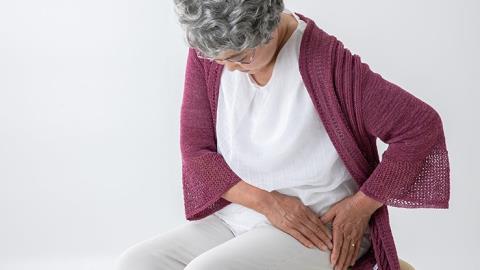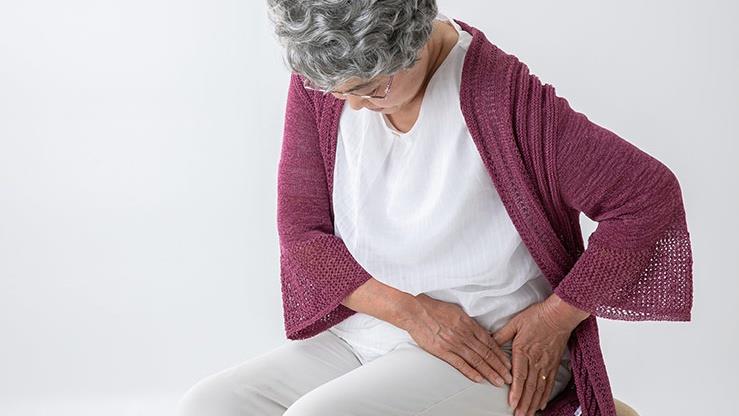What is hip bursitis? How to treat the disease effectively

Hip bursitis is a dangerous injury, but if detected early, it can be cured by medical methods and does not cause complications later.
Hip bursitis is an abbreviation for bursitis in the trochanter of the hip. People experiencing this condition will experience pain, limited movement,... The disease needs to be intervened as soon as possible to limit the possibility of serious complications.
What is hip bursitis?
Hip bursitis is an inflammation of the small sacs in the hip joint. In the area between the ligaments and bones, there are small sacs (bursa) with fluid inside, these bags have the function of cushioning and lubricating, inflammation of these pockets causes a lot of damage to the joints.
The trochanteric sacs are large, they separate the large trochanter of the hip and the muscles and tendons of the thigh and buttocks. This condition is one of the most common causes of hip pain. Because when these small pockets are irritated or inflamed, it causes pain in the hip.

Hip bursitis is an inflammation of the small sac in the groin
Hip bursitis is a common disease in middle-aged or elderly women, but men or young people can still get it.
Common symptoms of hip bursitis
To know if you are suffering from bursitis in the hip joint or not, you need to watch for the following symptoms:
- Pain outside the hip, pain spreading to the thigh or inside the buttocks.
- Pain in the affected area while lying down.
- The pain occurs when you put pressure on the outer part of the hip.
- The pain is aggravated when the patient walks or stands up from a sitting position.
- Pain when going up the stairs.
Side pain is a common symptom of hip bursitis
There are a number of other symptoms depending on the condition of the disease, the above are just the most common symptoms. If in doubt, consult your doctor for helpful advice!
Causes of hip bursitis
Hip bursitis can be caused by one or more of the following:
Hip injury
Injuries such as falling on the hip, hitting a hard object, or lying on one side for too long can cause bursitis. People with recreational or overworked activities and a history of injuries in common areas are also susceptible to this disease. Ordinary activities such as running up stairs, climbing or standing for long periods of time can also sometimes cause illness.
Incorrect pose
The next cause of bursitis is pressure on the large soft tissues, plus the joints or bones are not in their normal state. This condition is more common in people with scoliosis , spina bifida, and other spine problems.
Other diseases
Patients with bursitis are more likely to have rheumatoid arthritis, gout, psoriasis , or unusual drug reactions. In rare cases, bursitis is the result of an infection of the trochanteric sac.
How to effectively treat hip bursitis
Doctors will conduct a physical examination to find out the cause, if necessary, the patient will be prescribed additional tests. Usually you will have imaging tests, such as X-rays, bone scans or magnetic resonance imaging (MRI) .
The primary goal of treating hip synovitis is to relieve pain and symptoms of inflammation. The most important thing is to protect the patient's mobility, prevent disability and disease recurrence.
X-ray to determine the disease and appropriate treatment plan
When the patient is determined to have bursitis, the doctor will give specific advice. Some cases will be treated with supportive means such as splints, heat and cold compresses. Currently most patients will be treated more advanced by measures:
- Non-steroidal anti-inflammatory drugs;
- Corticosteroid injections;
- Physiotherapy ;
- Surgery.
Lifestyle habits to help limit hip bursitis
Most cases of hip synovitis are determined to be caused by overactivity. Therefore, the best treatment is prevention and modification of bad living habits to eliminate the cause of the disease. You can use these basic rules in your life to avoid getting sick:
- Don't do sudden high-intensity activity, do it slowly first and gradually increase the level for the body to adapt.
- Limit force and limit repetition of strenuous activities for long periods of time, reducing repetitive activities that put pressure on the hips.
- Stop all activities you are doing immediately if you notice unusual pain.
- Do hip exercises to maintain strength, flexibility, and flexibility.
- When pain occurs, use a brace or walking crutches for a week or more if needed.
Here are some facts about hip bursitis that you should know. This is not a life-threatening disease but will cause pain and difficulty with movement. The disease can be completely prevented by adjusting the lifestyle and maintaining the healthy exercise habits mentioned above.